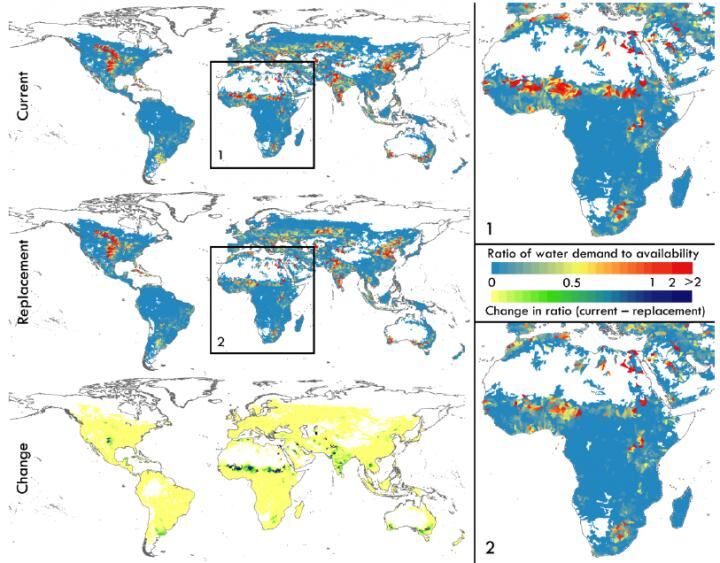Agricultural demand is forecast to grow substantially over the next few decades due to population growth, richer diets and biofuel use. Meanwhile, water stress is expected to worsen with climate change and as global aquifers are rapidly depleted.
In an attempt to address these twin challenges, the researchers looked at crop water-use models and yield maps. They were specifically interested in identifying crop distributions that would make rain-fed production less susceptible to dry spells and reduce water consumption in irrigated systems.
The research, published yesterday (7 November) in Nature Geoscience, focused on the 14 crops that make up 72% of global harvests: groundnut, maize, millet, oil palm, rapeseed, rice, roots, sorghum, soybean, sugar beet, sugarcane, sunflowers, tubers and wheat. Fruits and vegetables were not included because good data on their water requirements were not available.
According to the researchers, if food production was re-distributed globally existing agricultural land could produce 10% more calories and 19% more protein – enough to feed an additional 825m people. Rainwater use in agriculture could also be cut by around 14% and irrigation water use could be reduced by 12%.
Lead author Kyle Davis explained: “There are a lot of places where there are inefficiencies in water use and nutrient production.” These could be fixed, he said, by swapping in crops that have greater nutritional quality and lower environmental impact.
According to this model, improvements would be achieved by dramatically increasing production of groundnuts, roots, soybeans, sorghum and tubers and decreasing millet, rice, sugar and wheat, which consume more water but have lower calorie and protein yields per hectare.
Specific changes vary widely by country and water use type due to differences in local climate, soil characteristics and crop yields. For instance, rain-fed sorghum, soybeans, tubers and wheat could replace millet, sugar beet and sunflower in western Russia. Irrigated maize, millet, roots and tubers supplanted rice, sorghum and wheat in northern India.

Water savings
The study identified crop redistributions that would create substantial water savings--at least 20% of water demand for agricultural production--for 42 countries. These include Australia, India, Mexico, Morocco and South Africa. Major water savings were also achieved in significant global agricultural centers, such as California's Central Valley, the Nile Delta, Southeastern Australia and the Indo-Gangetic basin. Water scarcity persisted in other important agricultural areas, such as the US Midwest, however, regardless of crop choice.
In 63 countries where water resources limit production and the population is heavily on food imports, redistribution could generate a rise in calorie or protein production “greater than 20%”. These included Ethiopia, Iran, Kenya and Spain, among others.
No need for big investments
The researchers noted that the crop redistribution model does not require large-scale investment in technology or increased use of water and fertilizer, which may be out of the reach of small rural farmers.
It is also free of some of the barriers to implementation faced by other proposed methods to protect against water stress, such as increased irrigation efficiency, planting higher yield crops, decreasing animal protein consumption, or cutting food waste.
While Davis said that the distribution model would not require significant investment or result in loss of crop diversity and soil degradation, he did note that the study did not take potential cultural or political barriers, supply and demand or consumption patterns into account. The findings "can be used as one of several tools in making food systems more sustainable," he suggested.
"If we think about the economic, social, and environmental aspects of food security in a particular country and work closely with local decision-makers, we can create solutions tailored to the needs and goals of that country's people.”
Source: Nature Geoscience
"Increased food production and reduced water use through optimized crop distribution"
Published online ahead of print, doi:10.1038/s41561-017-0004-5
Authors: Maria Cristina Rulli and Antonio Seveso
